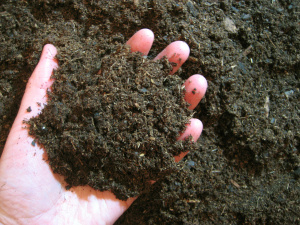At a recent family picnic, I was sitting on the ground with my 5-year-old son, in the shade of an old sprawling tree. We were on a farm in the Driftless region of Wisconsin, taking in the green, undulated scenery. I sipped a mimosa and stared back at the Limousin cattle. My son broke my reverie with an urgent inquiry, “Mom? . . . Mom!? What is dirt?”
In parenthood, I’ve discovered that describing the simplest concepts can prove to be the most challenging. I paused while the gears in my head went to work. I settled on telling him that “dirt” is what’s in the ground—what we were sitting on.
My cousin, who just so happens to be an agronomist, was within earshot. He shifted in his chair and turned to us, saying, “In college, my professors—and soil scientists today—they get really upset about this. Soil is what’s in the ground. Dirt is what you wash off your hands and shoes.”

Turns out, there is a whole world of soil that was unknown to me—and I suspect to most people. Every state in the U.S. has an official state soil, which go way beyond “clay” or “sand.”
In 1983, in what was perhaps one of the more novel acts to come out of Madison, Antigo was given official status. Antigo soil, found in the north central part of Wisconsin, is described as being a productive, well-draining soil suitable for growing crops and pastureland.
The late Francis D. Hole, a professor at University of Wisconsin-Madison, wrote extensively about soil. His body of work includes not only scientific journals, but plays and songs. In 1980, Hole wrote the Antigo Silt Loam Song:
Antigo, a soil to know, Wisconsin’s crops and livestock grow;
and forests too, on Antigo;
and forests, too, on Antigo.
The next time you’re outside, pause a minute to think about the dirt—I mean, soil—beneath your feet.
Advertisements Share this:Thanks to the Daily Post for the Soil writing prompt.





